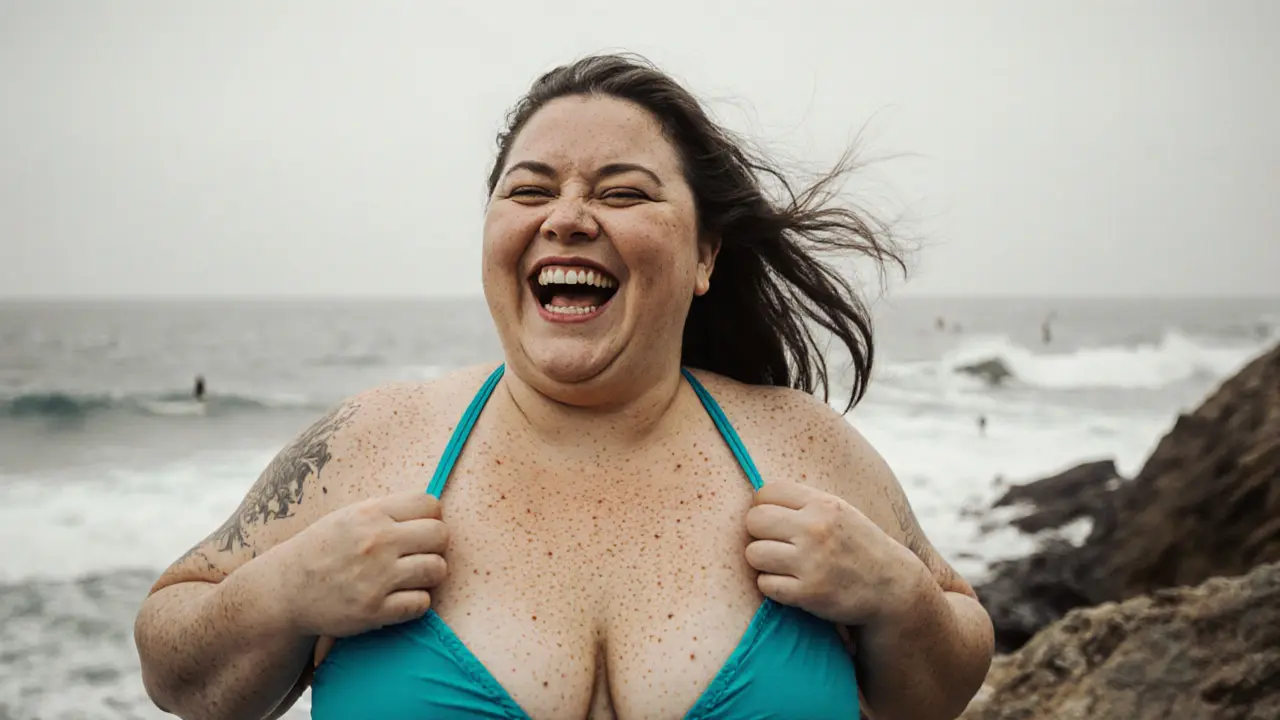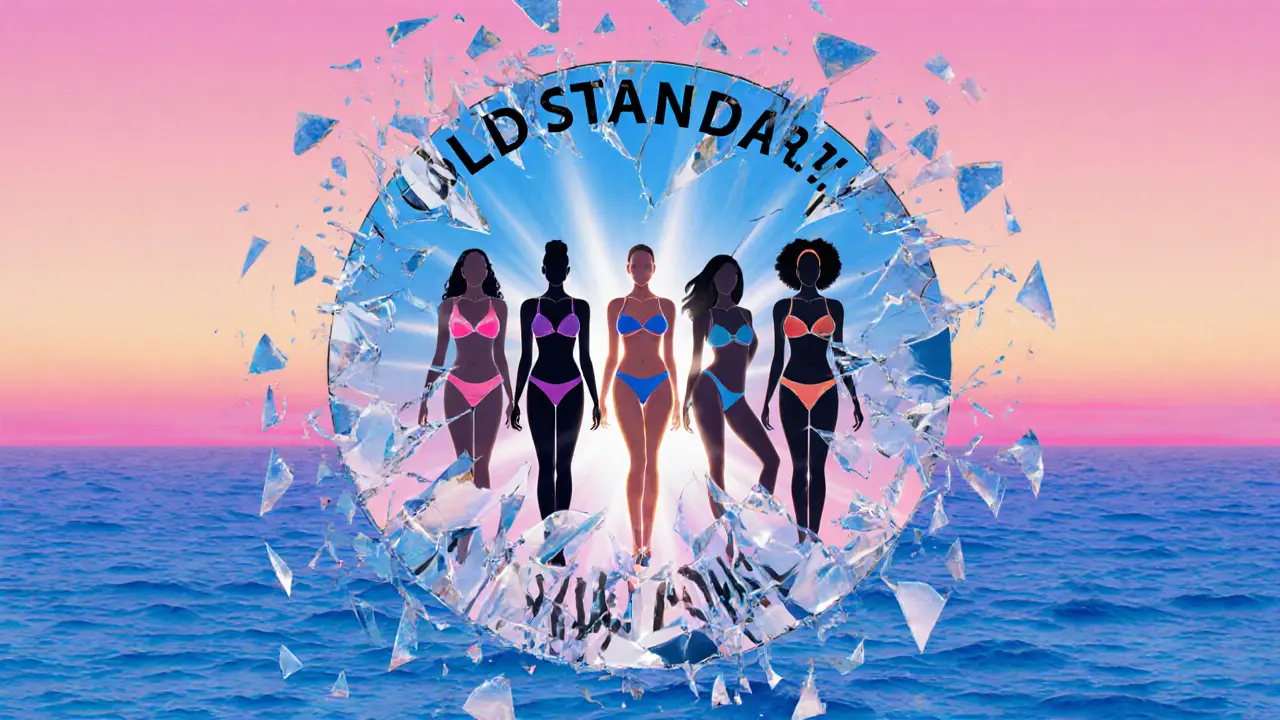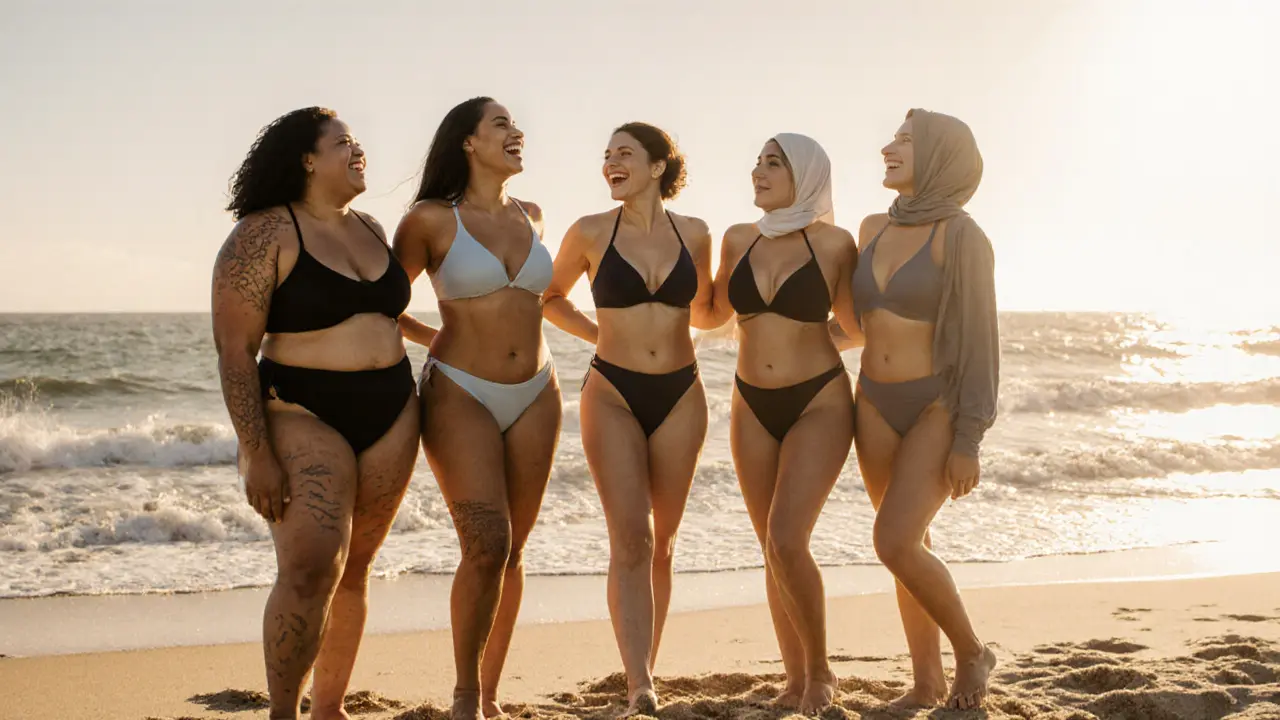You’ve seen them on billboards, magazine covers, and Instagram feeds-bikini models shaping how we think about swimwear, confidence, and body image. But who are they really? And why does their presence matter beyond the surface of a sun-kissed beach shot?
What Exactly Is a Bikini Model?
A bikini model isn’t just someone who wears a swimsuit. They’re visual storytellers. Their job is to show how fabric moves on skin, how cut and color enhance shape, and how confidence translates into desire. Brands don’t hire them just because they’re thin or tan-they hire them because they make you believe you could look like that too.
Today’s bikini models come in all shapes. There’s the toned athlete type, the curvy body positivity icon, the petite surfer girl, the statuesque runway model. Brands like Savage X Fenty, Aerie, and even mainstream labels like Speedo and Lululemon now cast models who look like real people-mothers, dancers, bodybuilders, and women with stretch marks and cellulite. It’s not about perfection anymore. It’s about representation.
Why Bikini Models Matter in Fashion
Swimwear is one of the most personal categories in fashion. It’s worn in private moments, on vacation, at the pool, in the sun. When you buy a bikini, you’re not just buying fabric-you’re buying how you feel in it. That’s why the face behind the model matters.
Think about it: when you see a bikini model who looks like you, it changes something inside. You stop thinking, “That’s not for me,” and start thinking, “Maybe I could try that.” That’s powerful. In 2024, 68% of women said they felt more confident buying swimwear after seeing ads with diverse body types, according to a survey by the Fashion Spot. Brands that ignored this shift lost sales. Those that embraced it saw engagement jump by over 40%.
It’s not just about selling suits. It’s about selling self-worth.
How the Industry Changed in the Last 5 Years
Five years ago, bikini modeling was dominated by one look: tall, thin, with long legs and a tan. Instagram influencers were mostly filtered, airbrushed, and posed in the same three positions: looking over the shoulder, lying on a towel, or holding a coconut.
Now? It’s different. Models like Paloma Elsesser, Ashley Graham, and Tess Holliday broke barriers. They didn’t wait for permission. They built audiences. They partnered with brands directly. And suddenly, companies realized: people connect with authenticity.
Even the big names changed. Victoria’s Secret shut down its Angels program in 2019. By 2023, they launched a new campaign called “The New Normal,” featuring models with stretch marks, scars, and different skin tones. The campaign went viral-not because it was perfect, but because it was real.
Today, agencies like IMG and Ford Models have entire divisions for “body diversity.” They don’t just want models who fit a size 2-they want models who fit a size 12, 16, 20. And the clients? They’re lining up.
Types of Bikini Models Today
Not all bikini models are the same. Here’s how the landscape breaks down now:
- Runway Bikini Models - Tall, lean, often signed with top agencies. They walk for brands like Victoria’s Secret (pre-2019), Swimsuits For All, and H&M Swim. They’re the classic image most people picture.
- Body Positivity Models - Curvy, plus-size, or non-traditional figures. They model for brands like Universal Standard, Girlfriend Collective, and Lane Bryant. Their power? Relatability.
- Activewear-Inspired Models - Athletic, strong, often fitness trainers or athletes. They wear high-support bikinis and tankinis. Think Lululemon, Nike, and Athleta campaigns.
- Beach Lifestyle Influencers - Not always professional models. Many are bloggers, surfers, or travel creators with 100K+ followers. They get paid to wear swimsuits in Bali, Ibiza, or the Maldives. Their appeal? Real locations, real moments.
- Ethnic & Cultural Representation Models - Women of color, hijabi models, Indigenous models. Brands like Modest Wear Co. and Aab Collection now feature them in swimwear campaigns, showing that beauty isn’t one-size-fits-all.
The days of one standard are over. Today, there are at least five distinct types of bikini models-and each serves a different audience.

How Brands Choose Their Bikini Models
It’s not just about looks. It’s about alignment.
A luxury brand like La Perla will pick a model with high-fashion credentials-someone who’s walked for Chanel or been in Vogue. A budget brand like Target might choose a relatable mom with a 50K Instagram following who posts real-life beach days with her kids.
Here’s what brands look for now:
- Engagement rate - Not just followers. Do people comment? Share? Save?
- Authenticity - Do they talk about body image? Self-care? Real struggles?
- Consistency - Do they post regularly? Do their photos look like they’re actually wearing the product?
- Values match - If a brand claims to be sustainable, the model should care about ocean conservation.
One brand in Australia, Roxy, started working with surfers instead of traditional models. Their campaigns showed real women riding waves in bikinis-no filters, no studio lighting. Sales went up 32% in six months.
What It Takes to Become a Bikini Model Today
Want to try it? Here’s the truth: you don’t need to be a size 0. You don’t need to be 6 feet tall. You don’t even need a professional photographer.
Start by posting photos of yourself in swimwear-real ones. Not staged. Not filtered. Just you at the beach, the pool, the lake. Use natural light. Wear something you feel good in. Then tag brands you love.
Many models got their start by sending a single photo to a small brand. One woman in Florida sent a photo of herself in a bikini while holding her dog. A brand called Sunbather reached out within 48 hours. She’s now their lead model.
Agencies still exist, but they’re no longer the only path. Platforms like ModelMayhem, Instagram, and even TikTok are where discovery happens now.
What to Expect When You See a Bikini Model Shoot
Behind every perfect beach shot is a lot of work. It’s not just sunshine and cocktails.
Shoots often start at 5 a.m. to catch the golden hour. Models wear multiple suits-sometimes 10 or more in one day. They stand in the sun for hours, reapplying sunscreen every 20 minutes. Hair gets salty, skin gets red, feet get sandy.
And the pressure? Real. Even today, many models are still asked to lose weight, change their body, or edit out their curves. But more are speaking up. Some now negotiate contracts that say: “No airbrushing of stretch marks or cellulite.”
One model in Barcelona told me: “I won’t sign a contract unless they promise to show my real skin. If they can’t do that, I walk.”

Where to Find Bikini Models Today
You won’t find them just in magazines anymore. Here’s where to look:
- Instagram - Search hashtags like #BodyPositivitySwimwear, #RealBikiniBodies, or #CurvySwimwear.
- Brand Websites - Check out Aerie, Savage X Fenty, and Girlfriend Collective. They feature real people, not just models.
- TikTok - Many bikini models now share behind-the-scenes clips. Watch for #BikiniModelLife or #SwimwearFits.
- YouTube Channels - Channels like “The Swimwear Diaries” or “Body Confidence TV” feature interviews with models talking about their journeys.
Don’t just scroll. Engage. Comment. Ask questions. Many models reply-and some even feature their followers’ photos.
Comparison: Traditional Bikini Models vs. Modern Bikini Models
| Aspect | Traditional Model (Pre-2020) | Modern Model (2025) |
|---|---|---|
| Body Type | Thin, tall, hourglass | Curvy, athletic, petite, plus-size |
| Editing | Heavily airbrushed | Minimal or no editing |
| Platforms | Magazines, billboards | Instagram, TikTok, brand sites |
| Agency Control | High-agencies dictated looks | Low-models often self-manage |
| Brand Focus | Sex appeal | Confidence, comfort, inclusivity |
| Representation | Primarily white, Western | Diverse in race, size, ability, gender |
Frequently Asked Questions
Are bikini models only for men?
No. While the industry was once marketed almost entirely to men, today’s bikini campaigns target women, non-binary people, and LGBTQ+ audiences. Brands know that people buy swimwear for themselves-not to impress others. In fact, 72% of bikini buyers in 2024 were women shopping for themselves, according to Statista.
Do bikini models have to be skinny?
Not anymore. The industry has shifted dramatically. Brands now actively seek models of all sizes. Aerie, for example, uses models from size XS to 3X. The focus is on how the suit fits, not the size of the body wearing it.
Can anyone become a bikini model?
Yes-if you’re willing to put yourself out there. You don’t need a degree, an agent, or a perfect body. Start by posting authentic photos in swimwear, tag brands you admire, and engage with communities. Many models today built their careers from one viral post.
Are bikini models exploited?
Some still are. But the tide is turning. More models are unionizing, negotiating contracts, and demanding creative control. Organizations like the Model Alliance now offer legal support and advocacy. The key is knowing your rights and walking away from jobs that don’t respect you.
What’s the future of bikini modeling?
It’s moving toward full inclusion. Expect to see more models with disabilities, older women, trans models, and non-binary people in swimwear campaigns. Virtual models and AI-generated faces are also rising-but real people still win. People crave authenticity. The future belongs to those who show up as themselves.
Final Thought
Bikini models aren’t just selling swimsuits. They’re selling the idea that you belong-no matter your shape, size, or story. The most powerful bikini photos aren’t the ones with the most filters. They’re the ones where the model looks like she’s smiling because she finally feels seen.
So next time you see a bikini model, don’t just look at the suit. Look at the person behind it. Because that’s where the real fashion is.






Kristin Briggs
Okay but let’s be real - the shift from airbrushed perfection to cellulite-inclusive campaigns is the only thing keeping fashion from collapsing into a void of toxic nostalgia. Brands are finally realizing that ‘sexy’ isn’t a body type, it’s a vibe. And that vibe? It’s messy, it’s real, it’s unapologetically human. The data doesn’t lie - engagement spikes when you stop pretending women are mannequins. This isn’t woke marketing. It’s just good business.
Also, can we talk about how 80% of bikini shoots still involve 14-hour days in 95-degree heat with zero shade? The ‘beach babe’ aesthetic is built on sweat, sunscreen burns, and silent trauma. We glorify the photo, not the grind.
And don’t even get me started on how some agencies still tell models to ‘tone down’ their curves to fit ‘the look.’ The industry talks inclusion but still has a secret size 6 rule. Hypocrisy level: max.
But hey - at least we’re talking. And that’s the first step to real change.
Also - I sent a photo of me in a bikini holding my cat to a tiny brand in Portland. They DM’d me. Now I’m their face. No agent. No filter. Just me and my stretch marks. Wild, right?